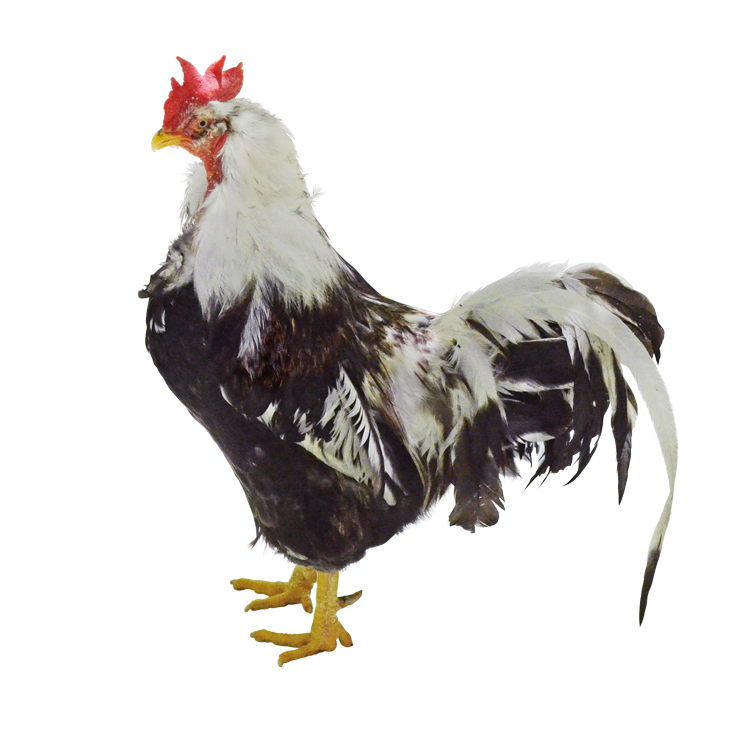
Gallus gallus domesticus
心を豊かにする鶏の声
The Sound of Chickens Enriches the Soul
今から約600年前の琉球王国時代に中国から沖縄に伝来し、士族や、裕福な人々の間で、声や体形を楽しむために、愛玩用として飼育されてきた鶏です。名前は「唄うチャーン」を意味しており、チャーンとは中国語の唄鶏「チャンチィ」が語源だと言われています。沖縄県の天然記念物に指定されています。
「ケッ、ケーーーーッ、ケッ」と3音節で唄うように鳴くことが特徴です。鳴き声は琉球古典音楽「散山節」にたとえられ、打ち出し(ウチンザシ)、吹き上げ(フチンザシ)、声のひき止め(クゥイトメ)、しめ(チラシ)、声の長さ(クィーナギ)を鑑賞基準としています。また声質は3絃で「高音・中音・低音」を出す三線の音色に例えられます。その鳴き声の美しさは人々に心の豊かさを与えるとされ、毎朝その鳴き声を聞くとさっぱりとした気持ちで1日を過ごすことができると言われています。
This chicken was introduced to Okinawa from China during the Ryukyu Kingdom era approximately 600 years ago and was raised as a pet by samurai and wealthy families for its voice and physique. Its name means “singing chicken,” and the word “chang” is said to be derived from the Chinese word for singing chicken, “chanchi.” It is designated a natural monument of Okinawa Prefecture.
Its distinctive three-syllable song-like crowing, “keh, keeeh, keh,” is characteristic of the Ryukyu classical music “Sanzanbushi.” The crowing is compared to the Ryukyu classical music “Sanzanbushi,” and the criteria for appreciation are the uchinzashi (starting sound), fuchinzashi (blowing), kuitome (holding the voice), chirashi (finishing the voice), and quinagi (length of the voice). The quality of its voice has also been likened to the sound of the sanshin, a three-stringed instrument that produces high, mid, and low notes. The beauty of its crowing is said to enrich people’s hearts, and hearing its crowing each morning is said to help people start their day feeling refreshed.
参考文献
沖縄こどもの国 | 動物図鑑 | ウタイチャーン(沖縄在来鶏) 2025年8月30日閲覧
うるま市 | 県指定の文化財 | チャーン 2025年8月30日閲覧
うるま市チェーン愛好会 | 沖縄県指定天然記念物 チャーン 2025年8月30日閲覧
琉球新報 (2016年12月31日)「チャーン 歌うような美声 高らかに響く」YouTube. 2025年8月30日閲覧